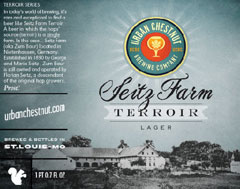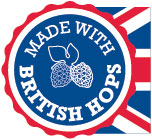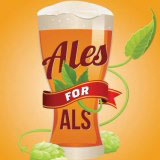 This is happening Saturday and I won’t be there. Who is scheduling my life? Wait, by the time the first beer is poured Saturday at the Urban Chestnut Brewing Hopfenfest I will have already done Saturdays at the Kernel, seen Helen Mirren in The Audience and, the time difference being what it is, be settling in for a pint of something on cask.
This is happening Saturday and I won’t be there. Who is scheduling my life? Wait, by the time the first beer is poured Saturday at the Urban Chestnut Brewing Hopfenfest I will have already done Saturdays at the Kernel, seen Helen Mirren in The Audience and, the time difference being what it is, be settling in for a pint of something on cask.
As greedy as it might be I’ll still pause a moment and wish somebody could put a glass of Seitz Farms Terroir Lager in front of me. Florian Seitz, who I have visited at the family farm in the heart of Bavaria’s Halltertau hop growing region, will in St. Louis to watch drinkers try a beer made with his hops. He doesn’t get to do that very often. “As a grower you are proud when you see what happens with your hops, when the product made from your own product is good,” he said when I was at the farm.
I’d like to see the look on his face Saturday.
And while we’re talking hops:
* More on how opinion has changed about what makes for good hop aroma (in some cases, of course) from Ed Wray.
Descriptions of new varieties used to be accompanied by notes on what percentage of them you could use before the flavour became unacceptable, and I once spoke to a retired Allied brewer who said he was only allowed to use a maximum of 25% Bramling Cross.
For further reading, see Rejected in 1960, Rejoiced in 2015? (Or buy the book.)
 * The British Hop Association has a new logo for brewers to use on pump clips, bottle labels and marketing materials. From the press release: “Ali Capper of the British Hop Association said ‘As a result of our recent work to promote British Hops, brewers were getting in contact wanting to promote the Britishness of their beer and I realised that we needed a new customer-facing logo. We’ve created something that will work at very small or larger sizes, that is clearly British and that promotes the provenance of British Hops.'”
* The British Hop Association has a new logo for brewers to use on pump clips, bottle labels and marketing materials. From the press release: “Ali Capper of the British Hop Association said ‘As a result of our recent work to promote British Hops, brewers were getting in contact wanting to promote the Britishness of their beer and I realised that we needed a new customer-facing logo. We’ve created something that will work at very small or larger sizes, that is clearly British and that promotes the provenance of British Hops.'”
The logo is available at the British Hop Association web site.
 * More hops with numbers, and in this case to support ALS research. Almost three dozen breweries have already signed up for Ales for ALS. Loftus Ranches and Hopunion are giving away a blend of proprietary hops to participating brewers, who will donate a donate a portion of the sales of the beers they make with them to ALS TDI, the world’s leader in ALS research.
* More hops with numbers, and in this case to support ALS research. Almost three dozen breweries have already signed up for Ales for ALS. Loftus Ranches and Hopunion are giving away a blend of proprietary hops to participating brewers, who will donate a donate a portion of the sales of the beers they make with them to ALS TDI, the world’s leader in ALS research.
The geeky details: Vinnie Cilurzo of Russian River Brewing and John Mallett of Bell’s Brewery designed the blend of 35% HBC (which stands for Hop Breeding Company) 462, 25% HBC 369 (otherwise known as Mosaic), 30% HBC 344, and 10% HBC 366.
The ALS Therapy Development Institute (ALS TDI) aims to discover and develop effective treatments and a cure for ALS.
Stan, do you know anything more about Ed’s writing, “They were descended from a New Mexican wild hop that had been fertilised by “open pollination” “?
Plan to talk about this Saturday morning at the Kernel.
Makes all kinds of sense–that Bramling Cross is one insane hop, isn’t it? I mean, intense.
Excellent opportunity, viz the Seitz Farm Terroir product, to isolate the essence of a legendary hop variety given not just the single variety but the sourcing from one farm.
Recently in Canada Alexander Keith’s (a unit of the macro brewer Labatt i.e. AB-In Bev) released as part of its new single hop series, a Hallertau beer. The can states the beer is ale, which I thought somewhat odd initially, but perhaps the intention was to offer something on the lines of an Alt or Kolsch Bier. Anyway, this is as close as I will get lately to trying to isolate the essence of this famous hop type.
I’ve always had some trouble though trying to separate the flavours some yeasts give off, especially lager yeasts, from the hops themselves. I’m hoping the Alexander Keith’s Hallertau will clarify that for me since I would think the whole point of what they are doing is to feature the hop in the aroma and taste and thus what one gets in that regard can in large part be attributed to the hop being showcased.
All these efforts at single hop beers are very valuable for this reason, it assists to understand what that part of the beer is really doing.
Gary
Gary – Several breweries around here doing single hop beers (of course, often American hops). Among the beers Urban Chestnut will be serving Saturday are one hopped only with Aramis and another with Triskel, both French hops.
UCB also has a Hopswitch series, a good way to try different combinations, to see how a beer made with A and B varies from one made with A and C.
That sounds great Stan. It really will assist what friends of mine in the bourbon community call palate training. It will certainly help me to try to nail down the sulfur taste some lager ferments gives off vs. how the Noble hops taste in the beer, I believe in the past I’ve confused these.
It was even more complicated in the bad old days of skunky green glass lagers but those days are fortunately mostly behind us!
Gary
Stan, do you know anything more about Ed’s writing, “They were descended from a New Mexican wild hop that had been fertilised by “open pollination” “?
Thanks!
Todd – Here is a link to the family tree Ed was referring to. A little hard to read, but the key variety is “neomex AA7.” It surely came from the American Northwest.
Even before E.S. Salmon acquired the Manitoban hop that gave brith to Brewer’s Gold and Bullion he made crosses with plants from Oregon.
Thanks Stan. I guess the writing “New Mexican wild hop” actually referred to neomexicanus and not specifically a wild hop from New Mexico?
That’s right, Todd. I’ve seen nothing to indicate Salmon got hops from anywhere in North America other than Northwest (including Canada, of course).
Thanks Stan! 🙂